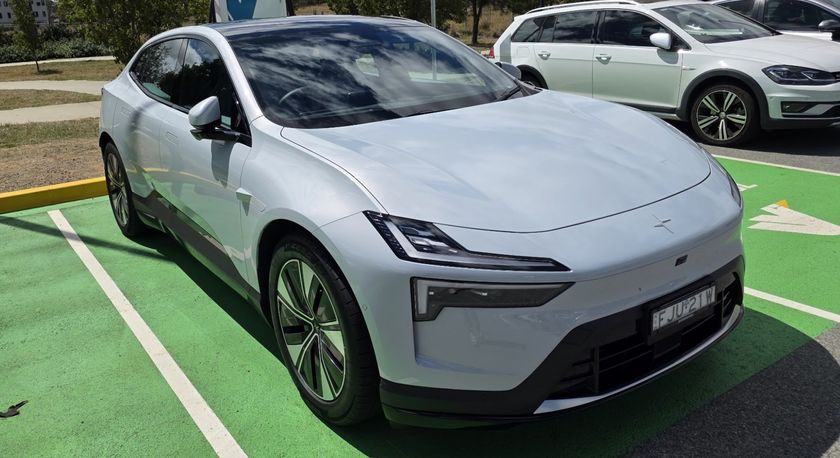Can the right cloud provider address the sustainability problem?
Using Cloud migration to reduce a carbon footprint

When it's applied well, technology helps organizations to thrive, innovate, and be competitive. Today’s digital landscape boasts a wealth of new business models, cost efficiencies and improved bottom lines. The impact of technology on the environment and its contribution to our carbon footprint is often myopically overlooked in organizational strategy and planning though. A peer-reviewed study stated in 2018 if the IT industry continues at the current rate, the sector will contribute to 14% of the global carbon emissions by 2040.
Matt Frank is Head of Cloud Modernization at Ancoris.
With that in mind, how can businesses define technology sustainability without resorting to a morass of buzzwords, or merely ‘Greenwashing’ what they do? Sustainable technology takes into account natural resources and fosters economic, social, and ecological development. The ultimate goal is to reduce environmental and ecological risks and drive long term societal value for all.
Many organizations have been slow to adopt meaningful technology sustainability initiatives, and some claim there are too many different metrics to measure sustainable technology adoption effectively. Its clear pressure from organizational stakeholders has increased significantly though. Nearly 1 in 3 consumers have reportedly stopped partnering with certain companies because they’ve had ethical or sustainability-related concerns. Similarly, when companies want to buy new products and services from suppliers, modern procurement teams assess the sustainability position of the supplier. Organizations would therefore be wise to ‘think big and start now’ and factor sustainability into their technology operations.
Tackling the impact of global Technology adoption
As of 2021, almost 60% of the Earth’s population are active internet users. As businesses and individuals generate more data than ever before, the technology industry is faced with the challenge of mitigating the impact data centers and other IT Infrastructure have on the environment and on natural resource consumption. The world’s data centers reportedly now use more electricity than the United Kingdom’s total electricity consumption, to provide the power and cooling needed to maintain temperature-controlled environments that function 24/7.
Cryptocurrencies are also incredibly resource-intensive, especially ‘proof of work’ currencies such as Bitcoin and Ethereum. At the time of writing, they are massive drivers of data center resource consumption. Bitcoin is currently estimated to have a similar carbon footprint to Kuwait, consume as much power as Thailand, and generate similar amounts of electronic waste as Holland does. A single Bitcoin transaction consumes as much electricity as an average U.S. household does in about 75 days, and generates e-waste equivalent to throwing two iPhones straight in the bin.
The number of data centers worldwide has grown significantly from 500,000 in 2012, to more than 8 million today. The amount of energy used by data centers continues to double every four years, resulting in the IT sector having the fastest-growing energy footprint globally. It’s clear data centers have a massive impact on sustainability globally, which has led software giants like Google to make sure they’re following a path via net-zero to being fully carbon neutral (and in some cases, carbon-negative). As the first Cloud Service Provider to go carbon-neutral in 2007, Google is the frontrunner in committing to using renewable energy sources and ensuring its data centers use 50% less energy than the industry average. The company is targeting being fully carbon-free by 2030 globally and has implemented highly efficient evaporative cooling solutions, smart temperature, lighting controls, and custom-built servers which use as little energy as possible.
Using Cloud migration to reduce a carbon footprint
Many organizations don’t have the financial resources available for extensive, dedicated sustainability initiatives for their data centers and wider technology operations. Net-zero actions, like buying enough high-quality carbon offsets to offset carbon impact, and carbon-neutral actions like converting or upgrading data centers to be carbon neutral, are both costly.
Are you a pro? Subscribe to our newsletter
Sign up to the TechRadar Pro newsletter to get all the top news, opinion, features and guidance your business needs to succeed!
There are measures that can be put in place relatively easily to become more energy-efficient and reduce your technology carbon footprint. The biggest opportunity lies with Cloud computing. Choosing a public Cloud provider like Google who is actively neutralizing their carbon footprint, and are committed to and focused on going beyond net-zero, is a relatively easy ‘win’.
A key factor in the technology industry’s reduction of CO2 emissions has been the consolidation of on-premise data centers into larger-scale Cloud-based facilities. Cloud Providers’ data centers leverage economies of scale to manage power consumption efficiently, optimize cooling (and hence water consumption), deploy power-efficient servers at scale, and maximize server utilization. Organizations can take advantage of these benefits as well as the improved cybersecurity, scalability and potential operational and cost efficiencies migrating to the Cloud brings.
Accenture’s report The Green Behind the Cloud corroborates this by stating migrations to the Cloud will reduce global carbon emissions by as much as 59 million tons of CO2 annually.
The future of sustainable technology
Momentum in the sustainable technology movement has been building for some time. It’s no longer possible (or reasonable) for organizations to overlook their obligations to society, and not implement sustainability best practices. Technology industry consumers, partners and stakeholders are committing to sustainable and ecologically positive behavior and expect businesses in the sector to do the same.
Businesses need to consider what they can do, but when and what to plan, their step towards a more sustainable IT landscape. For many organizations, Cloud migration (or further Cloud adoption) is the fastest and best route to get to fully carbon-neutral IT operations. Being Cloud-based means organizations use less power and help them reduce their carbon emissions. Businesses operating in the Cloud will consume around 77% fewer servers, and lower their reliance on expensive and ecologically harmful on-premise or hosted data centers.
At TechRadar Pro, we've featured the best green web hosting.
Matt Frank is Head of Cloud Modernisation at Ancoris. Having joined the business in 2021, he is responsible for establishing and managing Ancoris’ Cloud infrastructure. Matt previously worked at Sky for over six years in various positions, including Head of Platform Architecture, as well as working at KPMG as Lead Cloud Consultant and Bank of England as Domain Lead.













